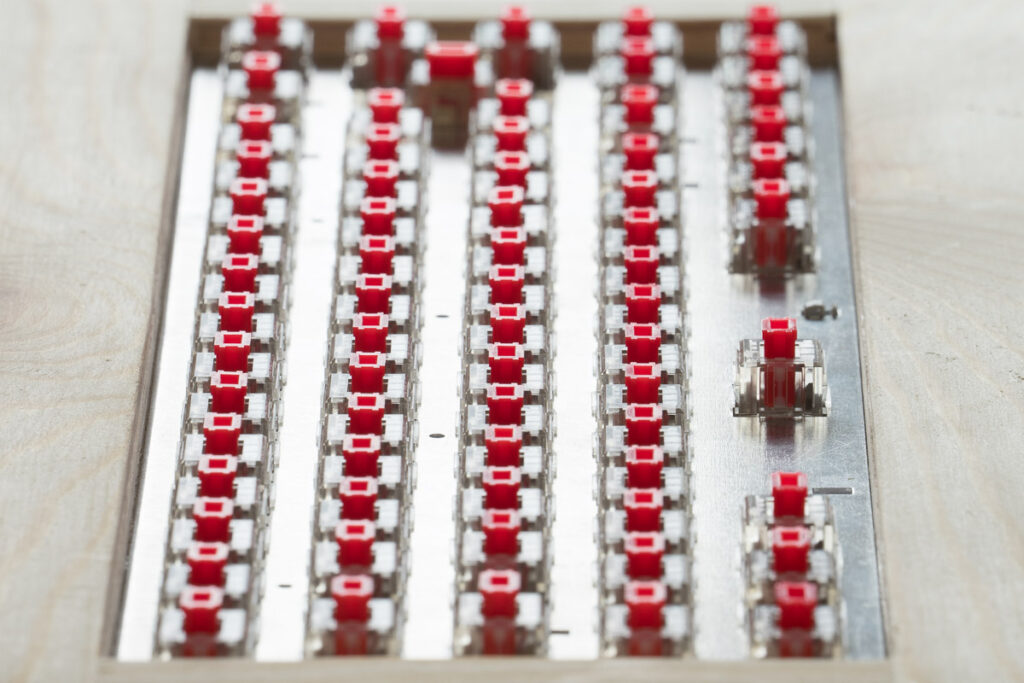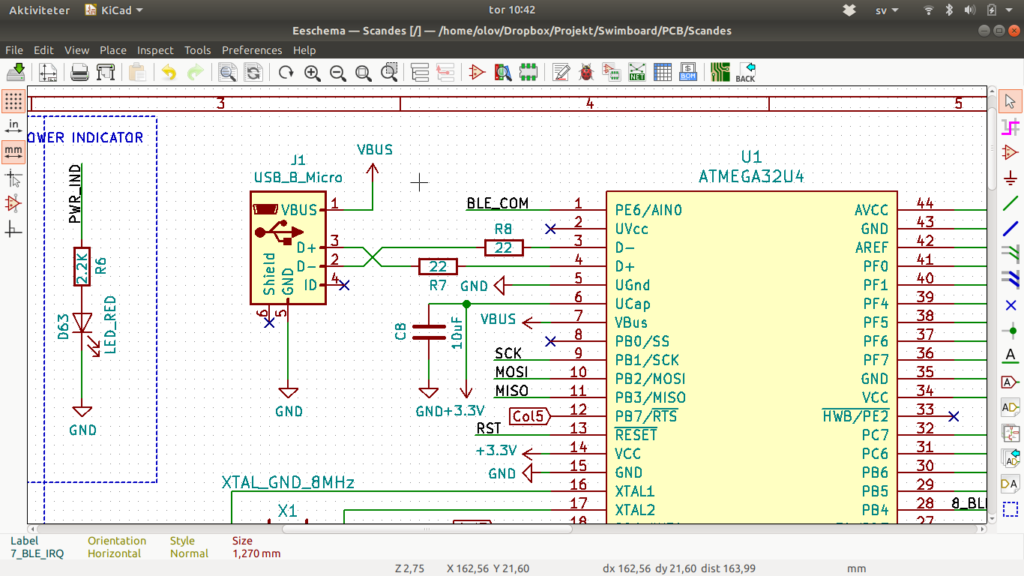I’m not blogging that much, am I? Now why is that? Could it be that I’ve given up on this idea already? Have I realized that this is beyond me? Alas, no. I’m still working on this monster of an idea. In fact I’m working so hard (when I have the time) that blogging isn’t a priority at all.

I’m doing this on my (limited) spare time. This is not, I repeat not, a full time pursuit. Even if it should be. Hence the lack of updates
So what am I doing? I’m working three parallel lines; case design, pcb design and prototyping. And even though things are going well, it’s hard to focus enough on any one thing at a time. Everything depends on everything else. If I change the pcb, I need to change the case; the plate, mounting holes. The works.
My focus right now

I’m trying to create a perfect circuit board. It needs to do everything I want it to do, obviously. It needs to be compatible with the QMK firmware. And I want it to be modular, so I can use the same basic design for several keyboard sizes. I’m still working mainly on the 65% layout. Figuring as this is the largest I’ll go to begin with, I should make it first because omitting a few columns later on won’t be as difficult as adding a couple.
And then there’s prototyping showing me what doesn’t work. And a few things that do. And so I go back to changing the pcb.
What I’ve learned
- I’ve realized that the basis of a good design is the circuit board. I can fit it into any design, in fact I’m retrofitting it to match existing cases, but it’s so much better to base the case design on the pcb.
- The design process is a back and forth.
- Every iteration of any component makes this a better keyboard. It’s the Endgame I’m after.
I’ll get back to you soon. Hopefully with something a bit more tangible.

Leave a Reply